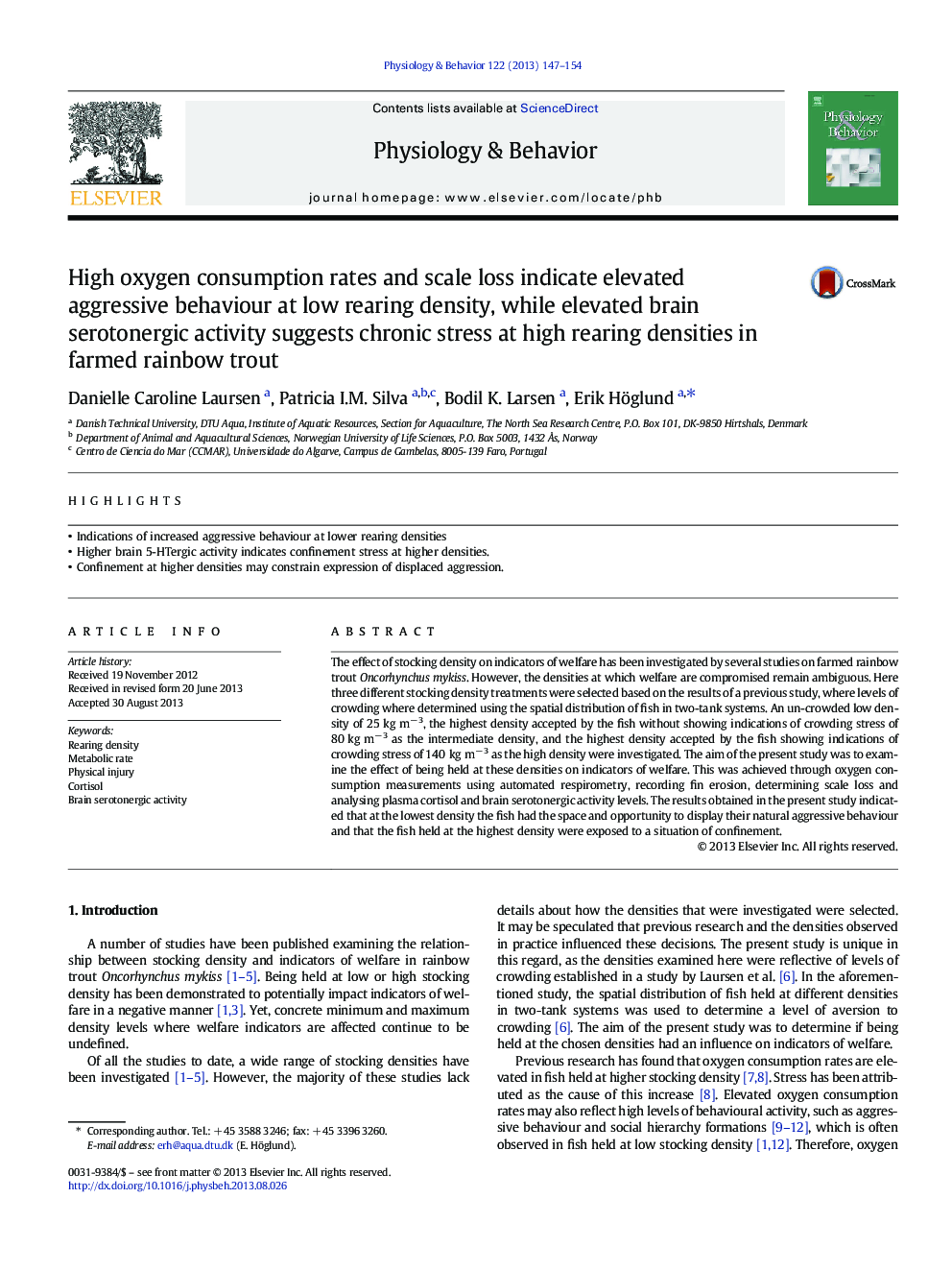| Article ID | Journal | Published Year | Pages | File Type |
|---|---|---|---|---|
| 5924369 | Physiology & Behavior | 2013 | 8 Pages |
â¢Indications of increased aggressive behaviour at lower rearing densitiesâ¢Higher brain 5-HTergic activity indicates confinement stress at higher densities.â¢Confinement at higher densities may constrain expression of displaced aggression.
The effect of stocking density on indicators of welfare has been investigated by several studies on farmed rainbow trout Oncorhynchus mykiss. However, the densities at which welfare are compromised remain ambiguous. Here three different stocking density treatments were selected based on the results of a previous study, where levels of crowding where determined using the spatial distribution of fish in two-tank systems. An un-crowded low density of 25 kg mâ 3, the highest density accepted by the fish without showing indications of crowding stress of 80 kg mâ 3 as the intermediate density, and the highest density accepted by the fish showing indications of crowding stress of 140 kg mâ 3 as the high density were investigated. The aim of the present study was to examine the effect of being held at these densities on indicators of welfare. This was achieved through oxygen consumption measurements using automated respirometry, recording fin erosion, determining scale loss and analysing plasma cortisol and brain serotonergic activity levels. The results obtained in the present study indicated that at the lowest density the fish had the space and opportunity to display their natural aggressive behaviour and that the fish held at the highest density were exposed to a situation of confinement.
